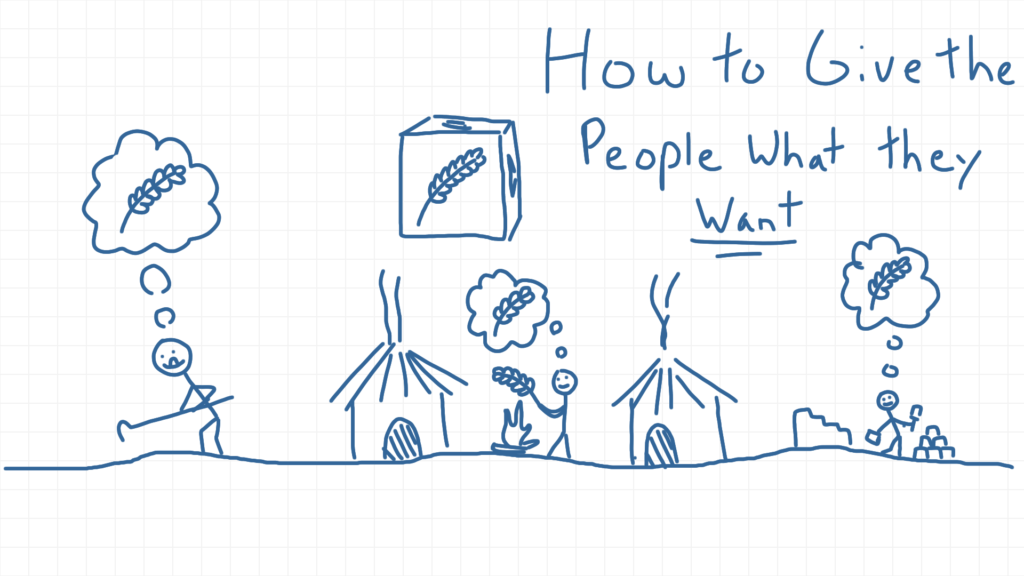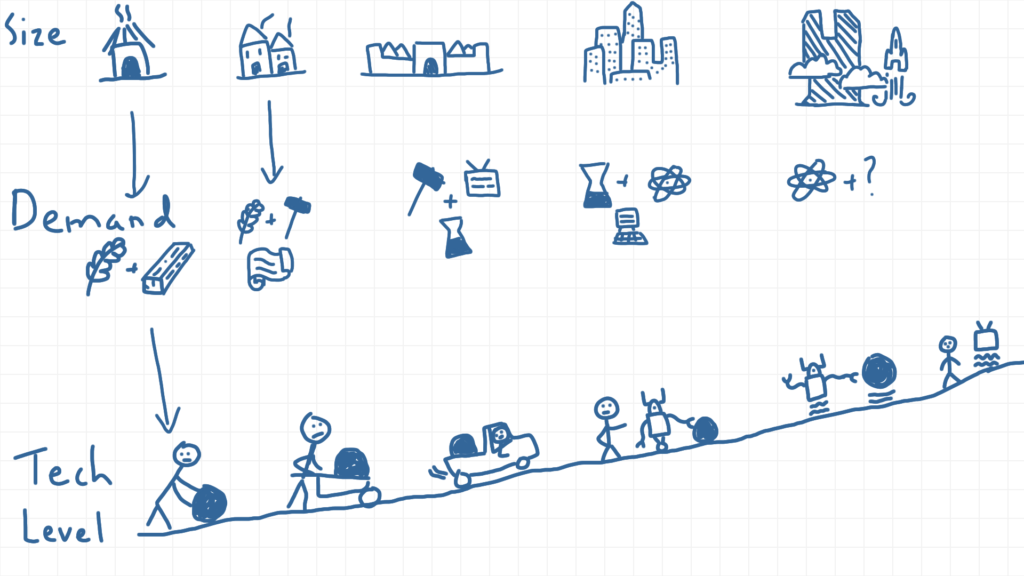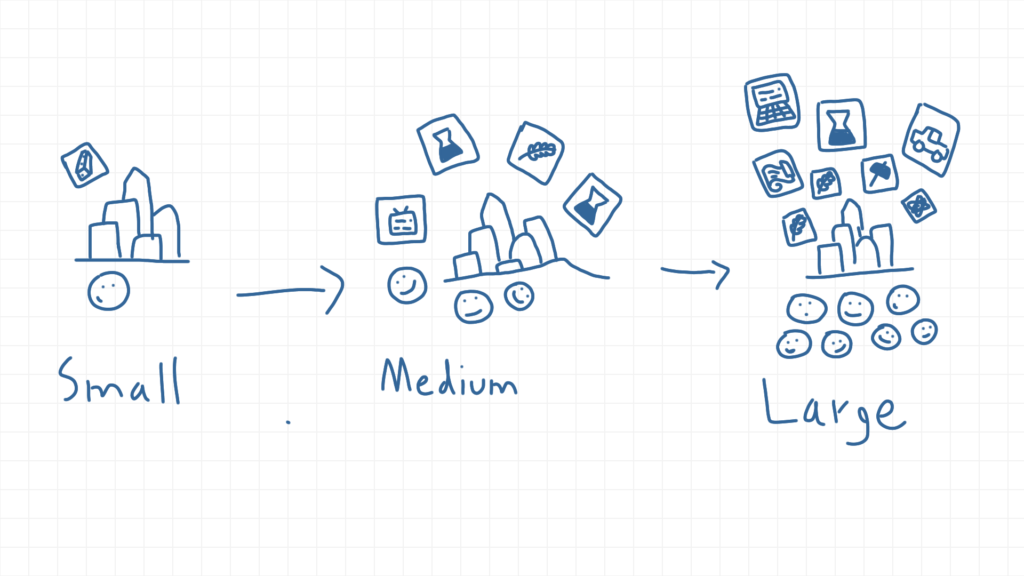A mechanic where the demands of cities is determined by periodic rolls of custom dice, which may change type and increase in quantity as the cities grow.
It is fun to see a landscape of villages grow into towns and cities because it appeals to that part of us that likes to construct and create things. Many games feature some form of economic growth, but few have an elegant way to model changes in demand that would accompany that growth. Detailed here is a way to quickly implement a logical (not completely random) demand system for burgeoning population centers.
Demand Dice breakdown
Imagine a landscape or playspace of different villages, each fairly small and with no defining features. Thematically, these villages are populated with workers mostly concerned with feeding themselves, and building their humble abodes, all while working with wood, stone, and other raw materials. Each of these villages contains the seed of a mighty metropolis – all that is missing is a little TLC in the form of meeting their needs, turn after turn. Such a village is represented by a single demand die, described below.

Demand die have unique faces that represent a particular type of demand: a wheat icon means food, a beaker means science equipment, and a television set means consumer goods. Demand die all come in different flavors, either via different shape (4-sided die vs 6-sided die) or different colors (blue vs red). Each demand die of the same flavor has the same icons, all of which capture a particular level of need for a population center.
A tier-0 demand die, represented today by a blue die, might have three “food” icons and three “raw material” icons since a tier-0 village is really just concerned about the very basics of life – staying fed in a warm hut. However, a tier-1 demand die might only have two “food” icons, three “raw material” icons, and one “tools” icon, representing the tier-1 villages shift from pure survival to cultural development. Skipping further into the future, a tier-3 demand die might have one “food” icon, two “science” icons, and two “transportation” icons, showing that the growing city has its food demands met and is now squarely focused on advancing technologically while also sorting out its mass transportation challenges. Finally, a tier-5 demand die, found only in the largest cities, could have 2 “energy” icons, 2 “luxury good”, and 2 “services” icons – these people aren’t concerned with advancing further and would rather just live in a comfy house with lots of expensive things.

Creating Demand
So the demand dice show what people want in various cities – now what? Well, since these villages are dynamic population centers, what the people want changes. This changing demand is capture by simply rolling the dice periodically. Referring back to the tier-0 example, a tiny village may flip back and forth between wanting food and wanting raw materials. Perhaps the demand die is rerolled every time a player meets that demand, or perhaps the die is rerolled at the start of every year, regardless of if the need was met.
As villages’ demands are met consistently, they eventually grow into towns and cities. Each time a demand die is provided with what it wants, the village gains a Happiness token. After village has a certain number of Happiness tokens, it grows into the next size up and the tier-0 demand die is replaced with a tier-1 demand die. Conversely, neglecting a village’s demand die for too long could lead to Happiness tokens being removed, and maybe even the village collapsing back to a tier-0 demand die.
Alternatively, as villages grow, perhaps they always keep their tier-0 die, but receive higher tier dice as additional demands. After all, people still need to eat, even if they have robo-butlers to mow their lawn. This has the added visual effect of a large city having lots of dice in it. Actually, between the many dice and a slew of Happiness tokens, no additional marker for city size may be needed using this method.

Supplying Demand
There should be some benefit to supplying the demands of these cities. Perhaps the goal is to grow your own city to a certain size before everyone else. Maybe the cities are in a common area, and anybody can meet the demands in exchange for Victory Points. In any case, supplying different types of demand ought to be interesting and challenging, or else the game doesn’t need different types of demands. This calls for unique and mutually exclusive sources of supply.
Since food is probably always in demand somewhere, there should be an avenue to develop an efficient food-producing engine in the game. To combat this, however, maybe providing food grants a low number of VP, or can’t produce Happiness tokens (it just keeps them from being removed). Maybe raw materials are cheap and easy to provide, but are only in demand for the early stages of the game, forcing players to make a decision about getting easy VP early on or investing in high-end production for the late-game megapoints.
“Do I build another quarry to supply all these villages now, or do I invest in a nuclear reactor to provide boundless energy to the cities that these villages will grow into later?”
If the game has a spatial component to it, then transportation of goods can be included in the gamespace as well. For example, a city on the west coast may be difficult to provide with heavy consumer goods from a production plan on the east coast. The solution may be to purchase a new production plant on the west coast, but does the cost justify the future VP earnings? Location and cost of transportation can also add an indirect area control element to the game – if Player A has many factories right by City X, it might not make sense to try to compete in there.